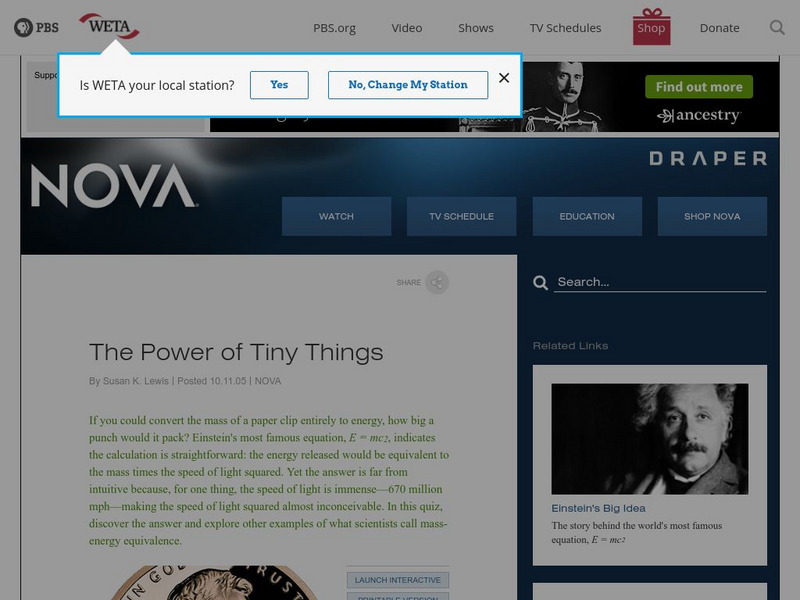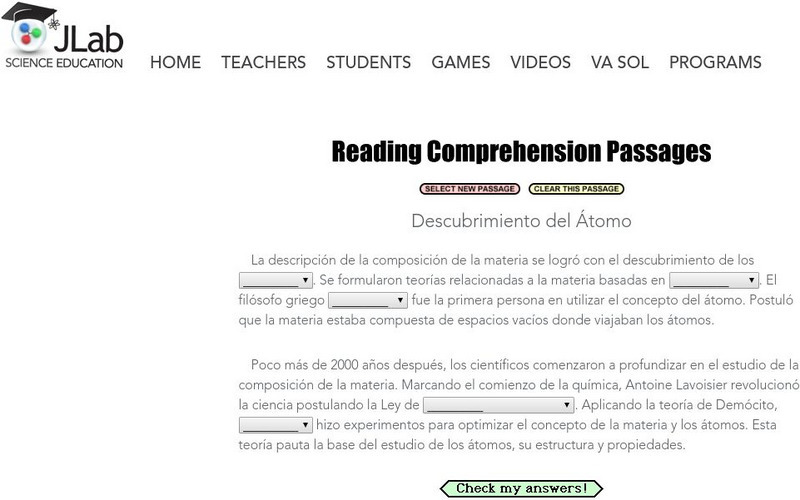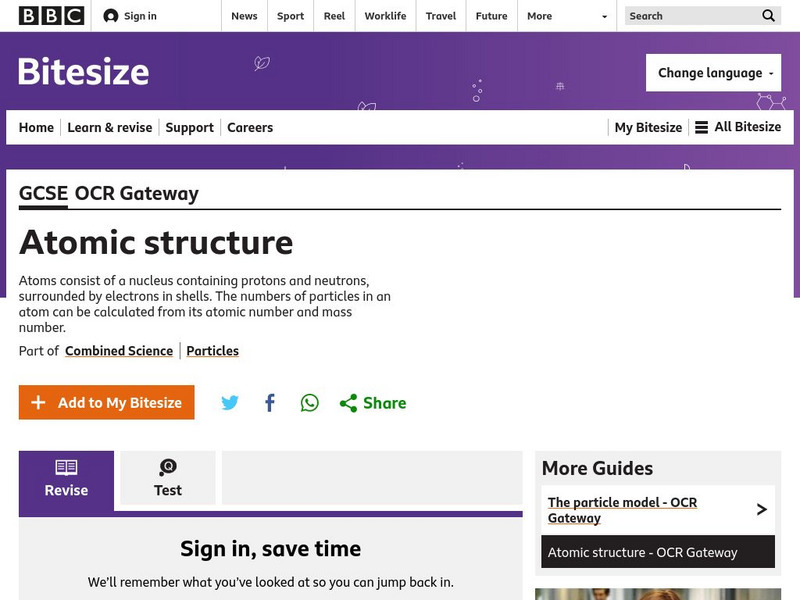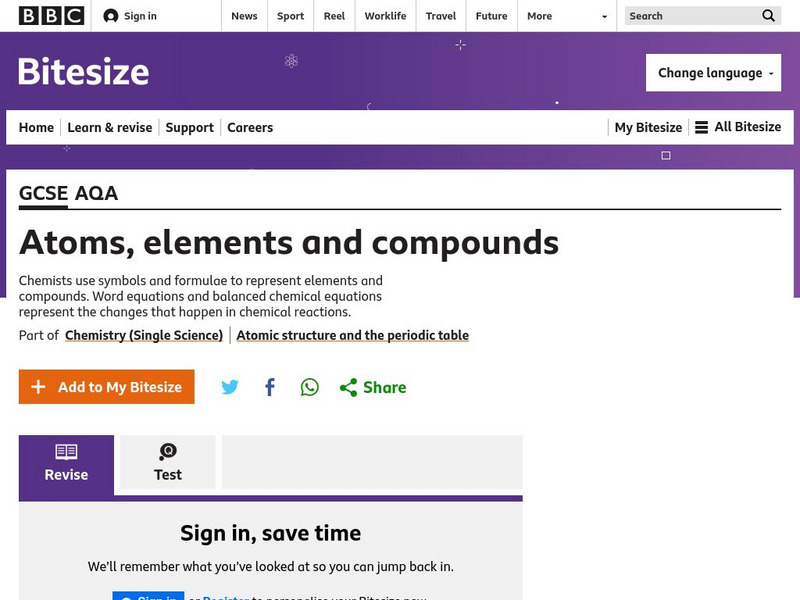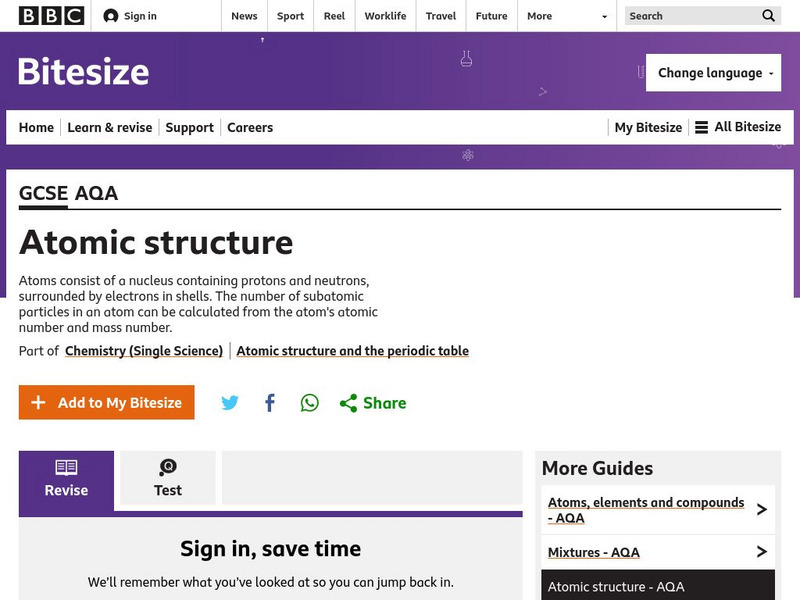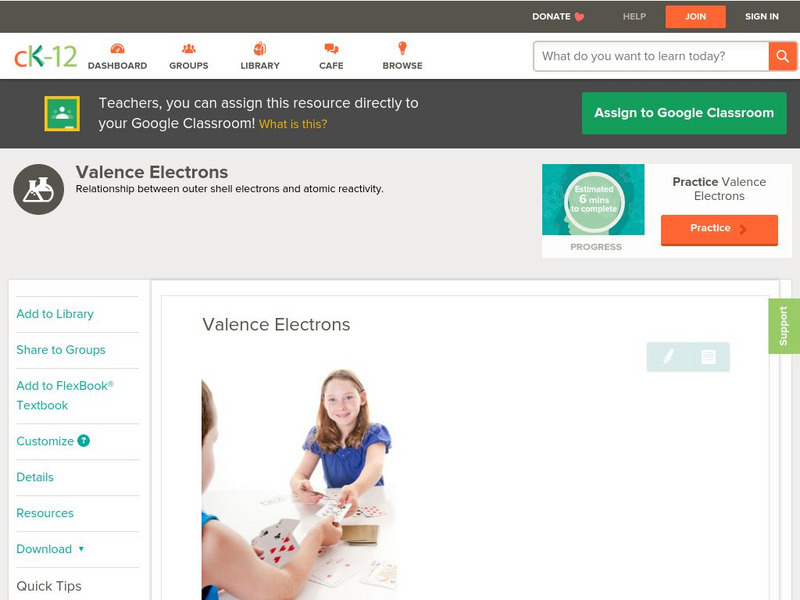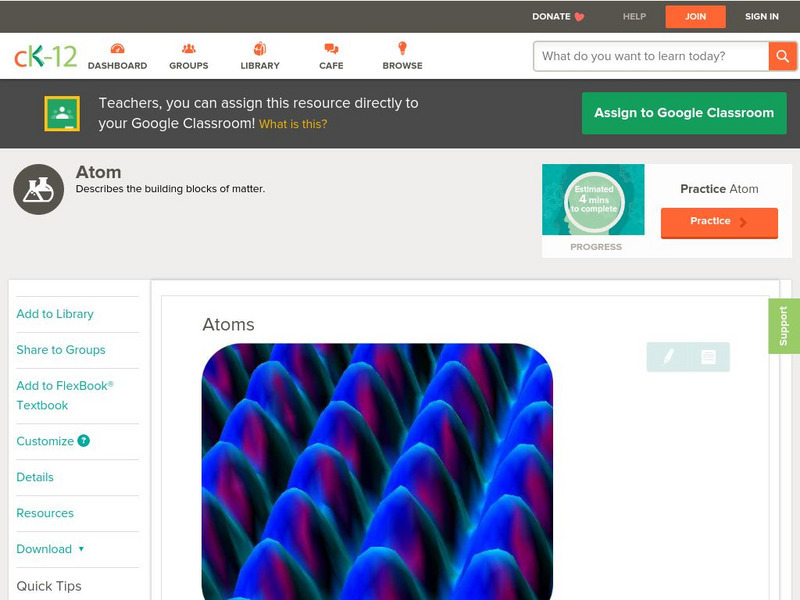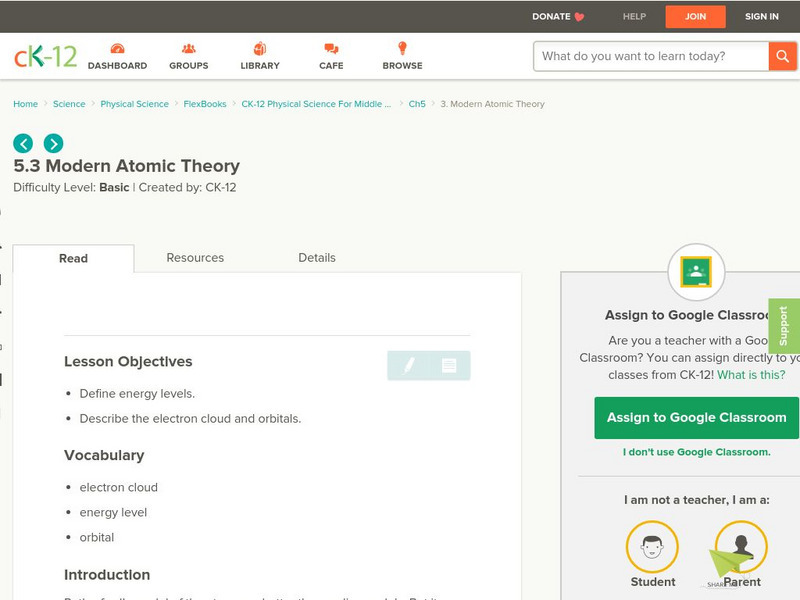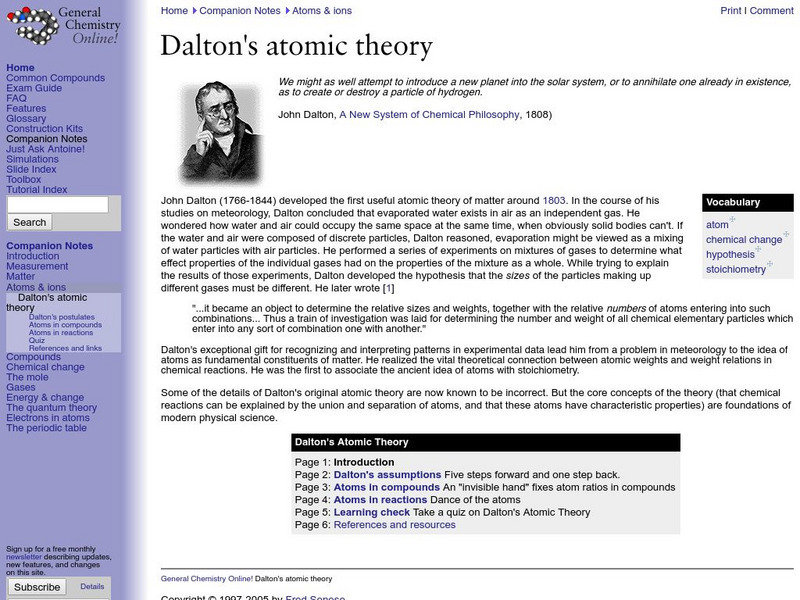PBS
Pbs Nova: The Power of Tiny Things
Have you ever wondered what would happen if you converted the mass of a paper clip into an amount of energy? In this informative quiz, discover the answer, and explore other examples of mass-energy equivalence.
OpenStax
Open Stax: Structural Organization of the Human Body
Try considering the structures of the body in terms of fundamental levels of organization that increase in complexity: subatomic particles, atoms, molecules, organelles, cells, tissues, organs, organ systems, organisms and biosphere....
Physics Aviary
Physics Aviary: Practice Problems: Light From Atom
Determine the wavelength, in nanometers, of light emitted from an atom.
Bill Nye
Bill Nye: Hole Y Water
This tutorial from Bill Nye uses an experiment with water and sugar to show how matter is mostly empty space.
Thomas Jefferson National Accelerator Facility
Jefferson Lab: Reading Passages: Descubrimiento Del Itomo
Read and fill in the blanks of this Spanish passage describing the atom. Each blank has a dropdown menu with choices. When you finish, click CHECK MY ANSWERS. If you pick a wrong answer, the right answer will be displayed along with your...
TeachEngineering
Teach Engineering: The Fundamental Building Blocks of Matter
This lesson plan explores the fundamentals of atoms and their structure. The building blocks of matter (protons, electrons, neutrons) are covered in detail. Students think about how atoms and molecules can influence new technologies...
Chem4kids
Chem4 Kids: Atoms Are Building Blocks
Identify the basic structure of atoms, the building blocks for all matter.
BBC
Bbc: Gcse Bitesize: Atomic Structure
This lesson focuses on the structure of atoms. All substances are made from atoms. Each atom is made of a nucleus - containing protons and neutrons - surrounded by electrons. It provides a link to an assessment.
BBC
Bbc: Gcse Bitesize: Monitoring Chemical Reactions
This lesson focuses on percentage yield including what it is, the formula for calculating percentage yield, a sample calculation, and a link to a test.
BBC
Bbc: Gcse Bitesize: Atoms, Elements and Compounds
This lesson focuses on atoms and elements including what they are, the chemical symbols for elements, and the placement of elements on the periodic table. A link to a test is provided.
BBC
Bbc: Gcse Bitesize: Atomic Structure
This lesson focuses on early ideas about the structure of an atom including John Dalton's plum pudding model and Ernest Rutherford's nuclear model. A link to a test is provided.
California State University
Csudh Project for Chemistry: Protons, Electrons, and Neutrons
This page is an exercise in relating the number of protons, electrons, and neutrons for an atom or monoatomic ion.
TED Talks
Ted: Ted Ed: What Is the Shape of a Molecule?
George Zaidan and Charles Morton shape our image of molecules. [3:47]
CK-12 Foundation
Ck 12: Physical Science: Valence Electrons
[Free Registration/Login may be required to access all resource tools.] Valence electrons, their variation in the periodic table and relation to reactivity and electrical conductivity of elements.
CK-12 Foundation
Ck 12: Physical Science: Atoms
[Free Registration/Login may be required to access all resource tools.] Atoms and how they are related to elements, and the particles that make up atoms.
CK-12 Foundation
Ck 12: Physical Science: Atoms
[Free Registration/Login may be required to access all resource tools.] Atoms and how they are related to elements, and the particles that make up atoms.
TED Talks
Ted: Ted Ed: Atoms From a to Easy!
Electron orbitals. Diagonal rule. Dot diagrams. The periodic table. There's so much to know about the tiniest building blocks of life- atoms. [4:41]
CK-12 Foundation
Ck 12: Fifth Grade Science: Physical Science: Types of Matter
[Free Registration/Login may be required to access all resource tools.] Discusses elements, atoms, compounds, molecules, and crystals. Looks at mixture and different types of them.
CK-12 Foundation
Ck 12: Fifth Grade Science: Physical Science: Atoms
[Free Registration/Login may be required to access all resource tools.] Looks at atoms and how they are related to elements, and the particles that make up atoms.
CK-12 Foundation
Ck 12: Chemistry Simulation: Atom Builder Challenge
[Free Registration/Login Required] Learn what makes each element unique by building the mystery atoms in the periodic table.
CK-12 Foundation
Ck 12: Modern Atomic Theory
[Free Registration/Login may be required to access all resource tools.] Rutherford's model of the atom was better than earlier models. But it wasn't the last word. Danish physicist Niels Bohr created a more accurate and useful model....
Frostburg State University
General Chemistry Online: Dalton's Atomic Theory
Discusses John Dalton's development of the atomic theory and the four main points of his theory. Includes references and a link to a quiz on Dalton's Atomic theory.
Utah Education Network
Uen: Reactions!
Learners use colored marshmallows (representing atoms) to construct compounds and arrange them into a balanced chemical equation.
Alabama Learning Exchange
Alex: Atoms and Models of Atoms
This lesson introduces students to scientific models. The students will learn how models of the atom have changed as new evidence is gathered. The students will also learn about the current model of the atom. Each student will make a...


